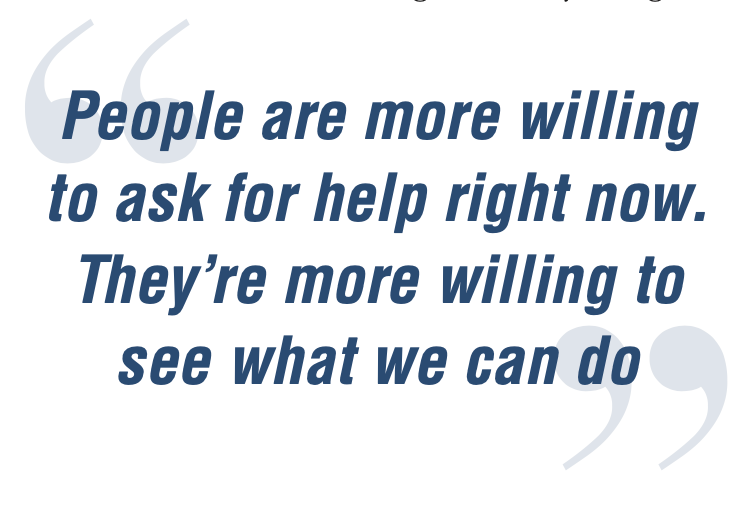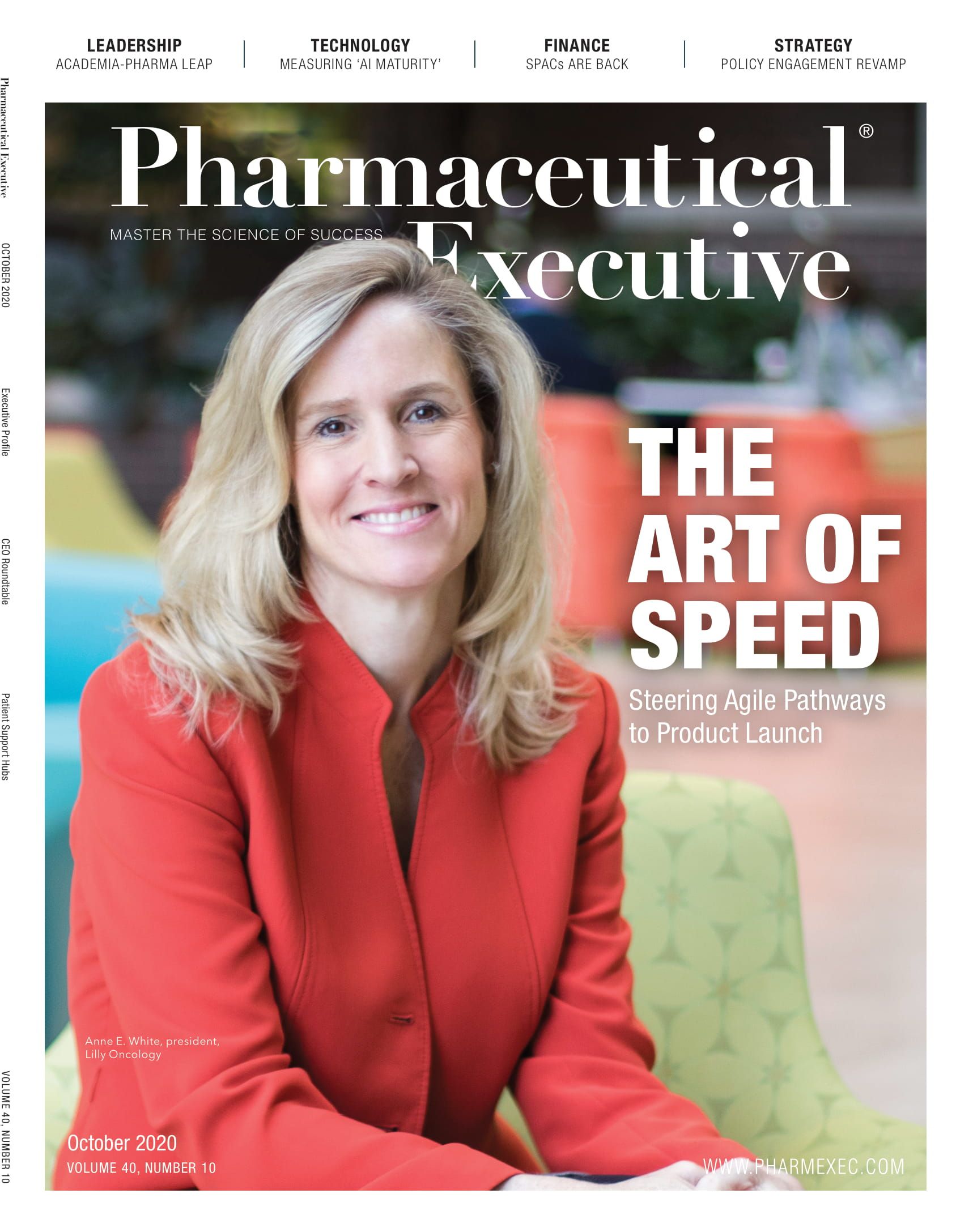Assets in Anxious Times: Patient Hubs Demonstrate Value During COVID-19
How ramped-up support and educational services have helped bridge the chasms and ease fears along the patient care continuum.
greenbutterfly - stock.adobe.com

Last spring, COVID-19 quickly swept the nation and forced the healthcare industry to adapt just as swiftly. In-person physician visits dropped precipitously as people stayed at home, afraid to expose themselves to the virus. They were scared and delayed elective treatments. Providers were busy changing the way they did business. They coordinated remotely with their nurses and office staff and scrambled to adopt new technologies in order to help patients.
As the void between patient and provider widened, it was an ideal opportunity for hub services to step in. These patient support groups ensured patients received the handholding they needed to navigate prescription and insurance issues. They also took the pressure off of physicians by providing innovative options for doctors to electronically engage patients.
During such an uncertain time, these groups proved to be a valuable asset for everyone.
The changing face of care
The uncharted territory of COVID caused disruptions at every point on the patient care continuum, from diagnosis through initiation of therapy to continuation of therapy. But the root of the pandemic’s impact on pharma was the reduction in patient visits to the physician’s office. According to Epic Health Research data, mid-April was the peak for telehealth visits, with 69% of total doctor visits being virtual.
This shift has resulted in fewer preventative screenings, and as a result, diagnosis has dropped for some therapeutic areas, such as those for breast and colon cancers.
Janardhan Vellore

“As much as it’s having an impact right now, there’s likely to be longer-term impact, because not only are patients not getting diagnosed right away, but some are not getting initiated on therapy in a timely fashion because of the need to get some pre-initiation lab tests and scans done,” says Janardhan Vellore, vice president at Beghou Consulting, a biopharmaceutical commercial strategy and operations consulting firm.
Pharma is noticing the effects. For example, Novartis’ Q2 sales numbers came in below expectations. Vellore attributes that to the company’s ophthalmology and dermatology drugs underperforming due to decreased patient demand. Lucentis, which needs to be administered as an injection into the eye in the physician’s office, and Cosentyx, which requires a subcutaneous injection under the physician’s guidance, were impacted by a slowdown in new patient starts and maintaining patients on therapy. As companies move forward, many are revising their 2020 sales guidance as a result, Vellore says.
Tommy Bramley, PhD, president of Lash Group, a patient support service company that is part of AmerisourceBergen, says his analytics team closely monitors the dynamics of prescription volumes and copay volumes, and both have been down since the pandemic began. He directly attributes that to patients avoiding in-office visits.
Arming patients with information about hub services can help them get ahead of their fears and avoid making choices that produce suboptimal therapeutic results. “Educating patients on a variety of hub services can help ease some of their treatment anxiety and provide supplemental options to navigate their access,” says Nicole Hebbert, a member of Pharm Exec’s Editorial Advisory Board and senior vice president, head of patient support services, at United BioSource (UBC), a provider of pharmaceutical support services. “This allows them to focus on their health and their families in an informed and empowered manner.”
UBC provided hub services for SK life science’s drug Xcopri, a treatment for partial-onset seizures that launched in May. Because Xcopri has a titration schedule, SK life science sought a partner that could help with that process, to ensure patients got started and continued their therapy as appropriate.
Robert Polans

“For patients who don’t want to go to the pharmacy or leave their house, the product is being delivered to their door, and we’re ensured a proper start, the right dosing, and the patient is put off on the best foot,” says Robert Polans, vice president of market access and trade at SK life science. “The main reasons why we launched in a COVID environment is because we have this program and it was the right thing to do for the patients. This program made us more confident that the launch would be executed in a better fashion.”
A hand to hold
While the average American was concerned about where to find toilet paper and hand sanitizer in the early days of COVID, patients had the added stress of worrying about how they were going to see their physician and receive the medicines they needed to survive. “Patient education and hand-holding have never been as important as now, because patients are scared,” says Vellore. “Engaging with the patient at each step of the way is really critical.”
As physicians’ offices are forced to adapt to new models, they don’t have the time and energy to educate patients on support programs. In the absence of that, hubs have had a proactive role to play.

“We normally rely on a doctor, nurse, or office staff to teach the patient about our program and what to expect, and that’s not happening, because maybe the doctor is talking to the patient on a telemedicine visit, but the nurse or the office manager never gets to,” says Meghan Szczech, senior director, patient services, at SK life science. “We have to think about how we approach those patients differently.”
Hubs are actively figuring out alternative pathways to reach patients, such as educating individuals through virtual programs and making connections through visiting nurses. The good news is that patients are receptive to their efforts.
Jennifer Lim

“I think people are more willing to ask for help right now,” says Szczech. “They’re more willing to see what we can do.”
Jennifer Lim, director of commercial operations at UBC, says the need for patient assistance has been on the rise. While some services, such as availing a nurse to engage with patients, may have seemed “extra” before, patients are demonstrating a need to connect with a professional who can verify that they have everything in place or talk about specific challenges they might be going through that may not be drug specific.
“It’s just that ear, that trusted, credible resource that has proven so valuable,” says Lim. “We’ve been able to have a lot of discussions around the importance of staying on therapy. We have resources here that can help patients through any challenge.”
Ensuring access
Initiating treatment in a COVID era is no easy task. To make the process easier, a spotlight has been shone on patient centricity and flexibility. Many pharma companies are developing novel strategies to ensure access:
- Zeposia, a multiple sclerosis (MS) drug recently launched by Bristol Myers Squibb, requires pre-initiation testing—bloodwork, an electrocardiogram, and in some cases an eye exam—before the treatment can be prescribed. To help patients, BMS is offering a visiting nurse to complete these tests in the patient’s home so that patients can avoid the lab and physician’s office.
- Ultragenyx’s X-linked hypophosphatemia drug Crysvita is usually administered by subcutaneous injection by a visiting nurse. However, some nurses are not comfortable visiting patients in their homes because of COVID. The company is now working with payers to authorize and approve self-administration by the patient.
- Biogen is exploring in-home infusions for the organization’s MS drug Tysabri, which currently is administered via in-office infusion.
- Merck & Co. reduced the dosing frequency of its immunotherapy drug Keytruda to 400 milligrams versus the 200-milligram dose that was initially approved. This allows patients to get administrations every six weeks instead of every three weeks, lessening the number of visits to their doctor’s office.
- Likewise, Lash Group decided almost immediately to increase the day supply on drug refills so that patients would have their medicines on hand.
Looking toward the future effects of COVID-19, Bramley also has been planning for what might be required of patient assistance programs and access programs when it comes to therapeutics and vaccinations.
All of these various programs need to be coordinated, and having a central place for patients to turn to makes the process easier. “The patients left to themselves will just say, ‘You know what, this is too much of a headache. I’m not going to do this now,’” says Vellore. “To help overcome that problem, biopharmaceutical companies have their hub support team reaching out to the patient saying, ‘Let me help you.’”
Tech boost
The virtual-induced world of COVID has certainly had an effect on how companies use technology to connect with patients (see the Q&A beginning on facing page). Though physicians have historically been hesitant to adapt new technologies, the coronavirus crisis gave them little choice. As a result, there has been an acceleration of new technology as well as greater adoption of digital practices that were already in place.
Nicole Hebbert

“The pandemic really has forced our stakeholders’ hand in a lot of ways,” says Hebbert. “Manufacturers and physicians alike have had to be more flexible in how they’re going to engage and take advantage of the patient support services. They have opened up to new technology and new processes that enable speed and efficiency. As many offices had to limit staff and patient visits, it became increasingly important for them to see how they can still work effectively by leveraging the clinical support, the adherence support, and the reimbursement and prior authorization support that’s out there to help patients get on the medications that they’re prescribing.”
Some technologies being developed by hubs and adopted by physicians and patients include:
- Mobile messaging applications to get patient consent.
- Virtual education sessions with patients for in-home self-administration.
- Digital signatures and digital assistant tools within the adherence space.
- YouTube channels to educate patients before the point of contact.
- Universal patient portals to upload documents via smartphone.
“We want to make sure that we have a variety of ways to communicate with patients and make sure there’s multiple modes of interaction between them,” says Bramley. “Some of these digital companions and digital tools were already in place and we’ve just seen quicker adoption of them. What may have taken three to five years, in terms of adoption with patients, now has maybe been condensed down into three to five months.”
In addition to developing new electronic tools, companies are using the power of technology in an analytical way. By combining anonymized patient-level data with machine learning, they can assess patients and situations.
“At Beghou, we help companies find emerging commercial opportunities—growth opportunities as well as risks, such as who is going to be noncompliant—and proactively predict some of these emerging situations so that targeted actions can be taken,” says Vellore.
Keeping patients covered
As the economy struggles through the COVID pandemic, unemployment and the resulting loss of insurance coverage are additional causes for concern.
Though it may not be fully evident now due to lingering government assistance, this impending gap is something to plan for in the near future.
Tommy Bramley

“As you see unemployment climb, there are insurance benefits still in place,” says Bramley. “However, those are going to dissipate, and there are going to be more people uninsured who are going to need to rely on the patient assistance programs. We help them in terms of insurance options available to them and we help them in the form of free medications through foundations. As commercial insurance wanes with higher unemployment, those two areas are going to be very important.”
Insurance companies are already addressing issues with a variety of temporary and emergency measures, especially regarding the prior-authorization and appeal processes. Some have become more lenient with their qualifying criteria, some have eased up their review process, and others have offered situational extensions to existing prior authorizations.
To help with coverage, most companies offer some form of patient assistance that targets the uninsured, underinsured, and functionally uninsured (those who have insurance, but aren’t covered because of the payer’s formulary). There are also programs to aid those with financial hardships.
Bridge programs are another useful way to ensure access to medicines, which may become more important in the coming months. “There is a whole host of barriers patients have to go through to get a specialty, rare disease, or oncology drug covered, and so that takes time and effort,” says Vellore. “In the bridge program, the patient hub works with the payers to help the patient get coverage approval eventually, but in the meantime, the patient doesn’t have to wait. They get a free starter kit and continuous supply at no cost for a limited duration.”
Zeposia provides a 30-day supply for up to 24 months in its bridge program. This is for people starting out on the therapy and for those who are going to lose coverage. Though bridge programs are very expensive, they are a good way for a launch brand like Zeposia to have some initial adoption when entering a competitive market. They also reduce uncertainty in the minds of physicians and patients.
Adapting to change
Meghan Szczech

Launching a hub program in a COVID environment certainly has it challenges. Due to the complex nature of some products, it can be difficult to design a successful program. There is no cookie-cutter approach (see related story on page 35).
“You have to be flexible,” Szczech told Pharm Exec. “We launched our HCP portal a week after we initially launched. Since then, we’ve had four different sets of updates and additions. It’s helped us think outside the box more than we ever had to and push the line further to make significant changes to differentiate ourselves.”
Until now, companies have been trying to quickly adapt to COVID to make sure patients have access. However, as the pandemic lingers on, they will have to start evaluating all these new strategies and technologies to determine which are the most valuable. This will certainly be something to think about as 2021 budgets are devised.
Elaine Quilici is Pharm Exec’s Senior Editor. She can be reached at equilici@mjhlifesciences.com.

Addressing Disparities in Psoriasis Trials: Takeda's Strategies for Inclusivity in Clinical Research
April 14th 2025LaShell Robinson, Head of Global Feasibility and Trial Equity at Takeda, speaks about the company's strategies to engage patients in underrepresented populations in its phase III psoriasis trials.